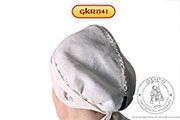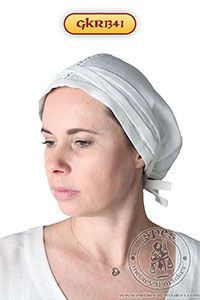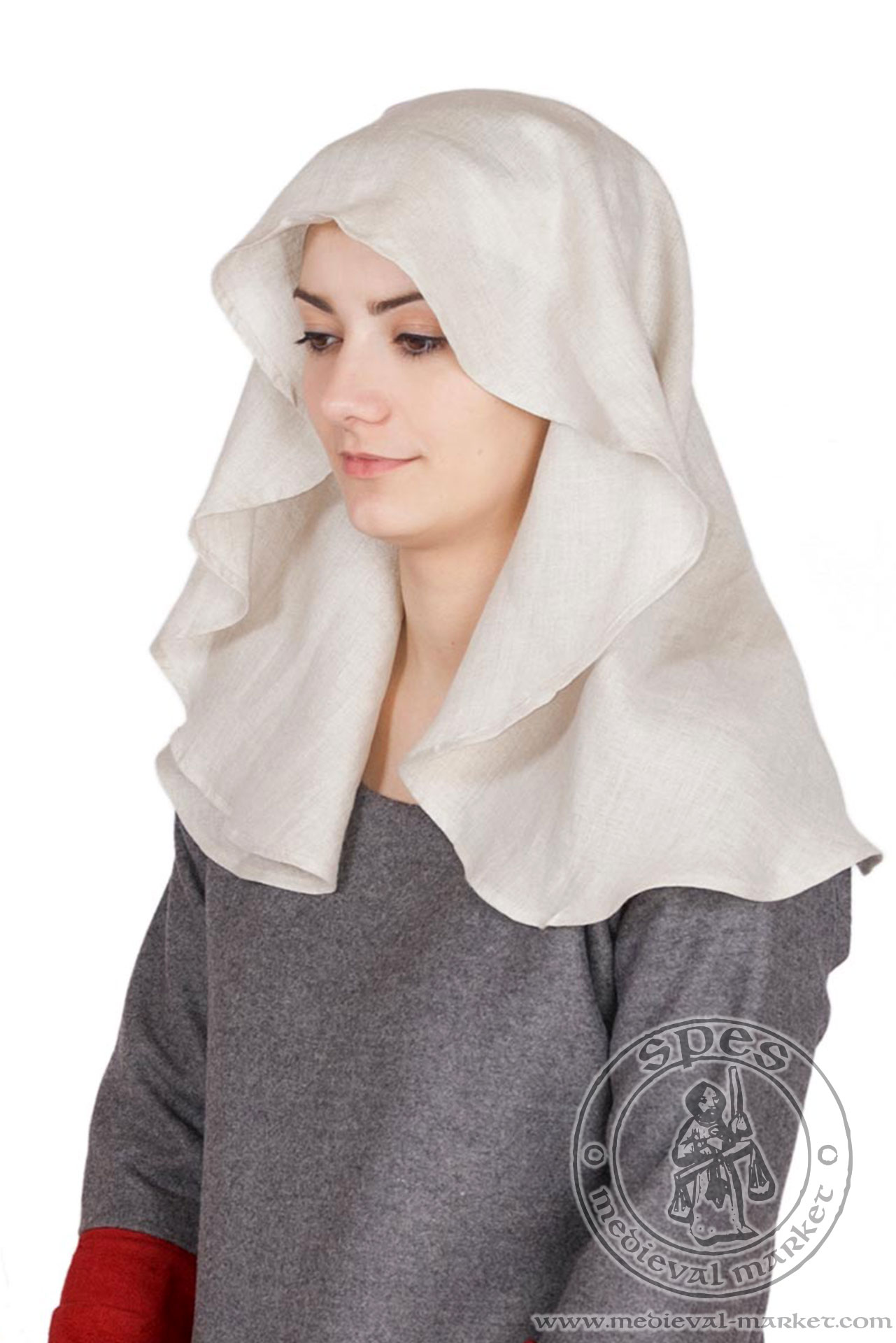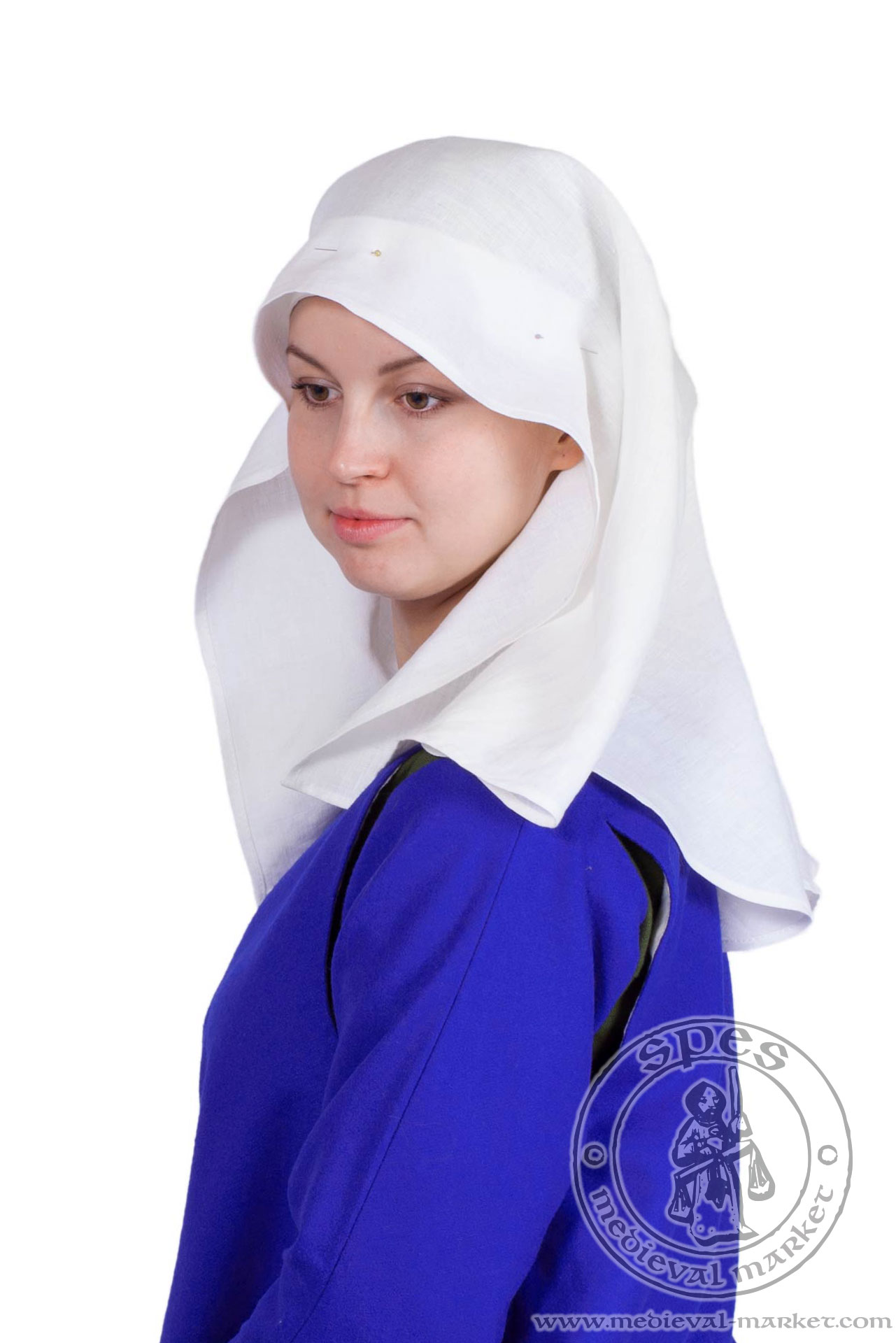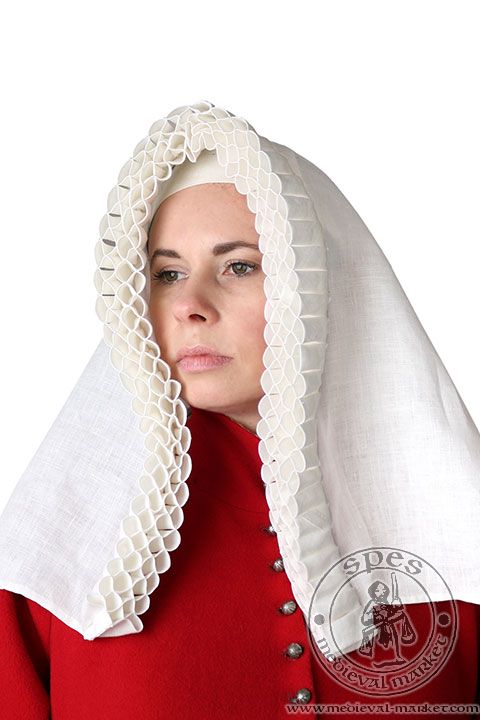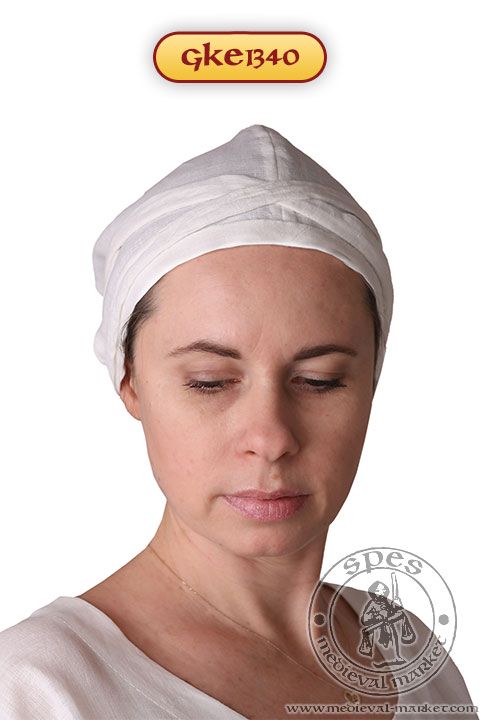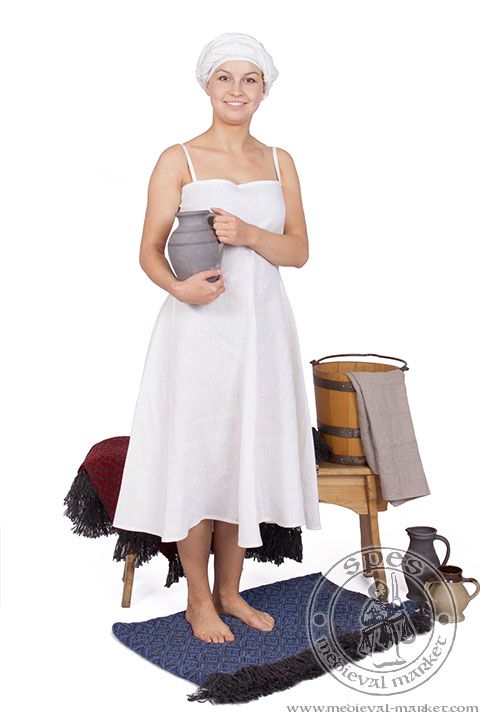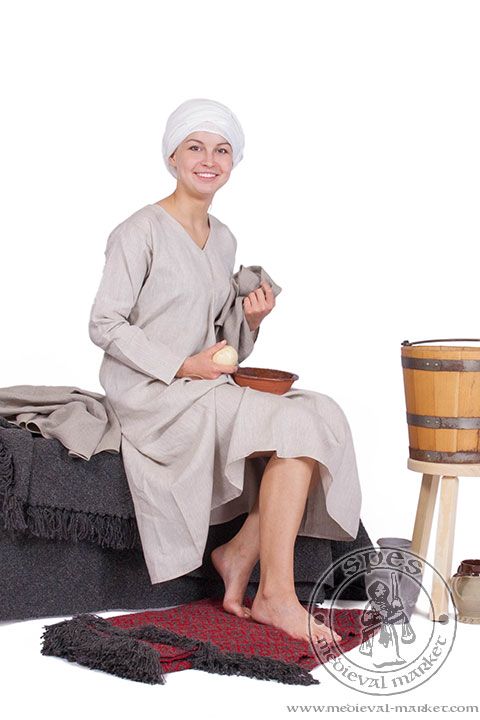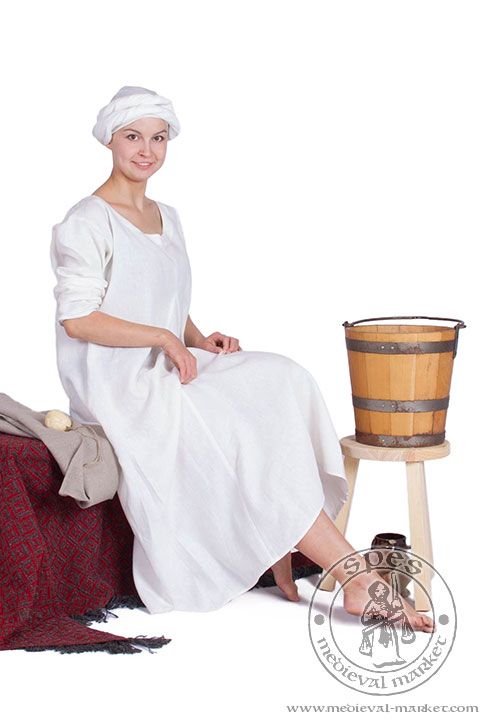This website uses cookies according to the Privacy Policy. By continuing to use the site you are agreeing to our use of cookies.
If you wish to adjust your cookie preferences for this website, you can do so using your browser settings.
If you wish to adjust your cookie preferences for this website, you can do so using your browser settings.



×
Automatic translation may cause errors - if you have encountered difficulties in placing an order, turn off these options in your browser.
Category: Female Clothing > medieval headwear
St. Brigid's coif
St. Brigid's coif
Century: XIII, XV| CODE | Material |
Standard
|
Price | |
| GKE1340 | White Linen | Machine-made | 17.00 EUR |
|
| GKLS1365 | White Linen | Mixed | 29.00 EUR |
|
| GKR1341 | White Linen | Hand-made | 54.00 EUR |
|
Lowest price in the last 30 days
See how to place an order for several people
St. Brigid's coif
Tied up coif of St. Brigid is a part of the category of medieval women's headwear. This type of linen headscarf can be found in iconography sources from 13th and 15th century. Examples of this unusual element of medieval female clothing come from the regions of France, Italy, and Scandinavia.
The features of St. Brigid's linen coif
This medieval headwear is characterized by interesting, encrusted (in high standard), binding on the middle length. St. Brigid's coif is hold by two long strips of fabric used to wrap around the head and tie up under the hair on the back. Later, the bow made by strips can be hidden to the inside. In the Middle Ages women's headwear of this type had a binding similar to a loop. Depending on its length, there were few ways of wrapping around the head. This medieval coif can be worn on its own or under additional kerchief. Usually women used it during work or their every day household duties.
A saved example of St. Brigid's women's coif is kept in the Museum of National Antiquities in Stockholm. An example from the 15th century of such linen headscarf can be found on the picture of Pedro Berruguete from around 1485-1490.






 Male clothing
Male clothing Accessories
Accessories Furniture
Furniture Tents
Tents Armament
Armament HMB Line
HMB Line Miscellaneous
Miscellaneous Rent
Rent In stock
In stock Special Offers
Special Offers Search
Search Your Account
Your Account About us
About us Sizing
Sizing How to buy
How to buy Blog
Blog Links
Links Events
Events






